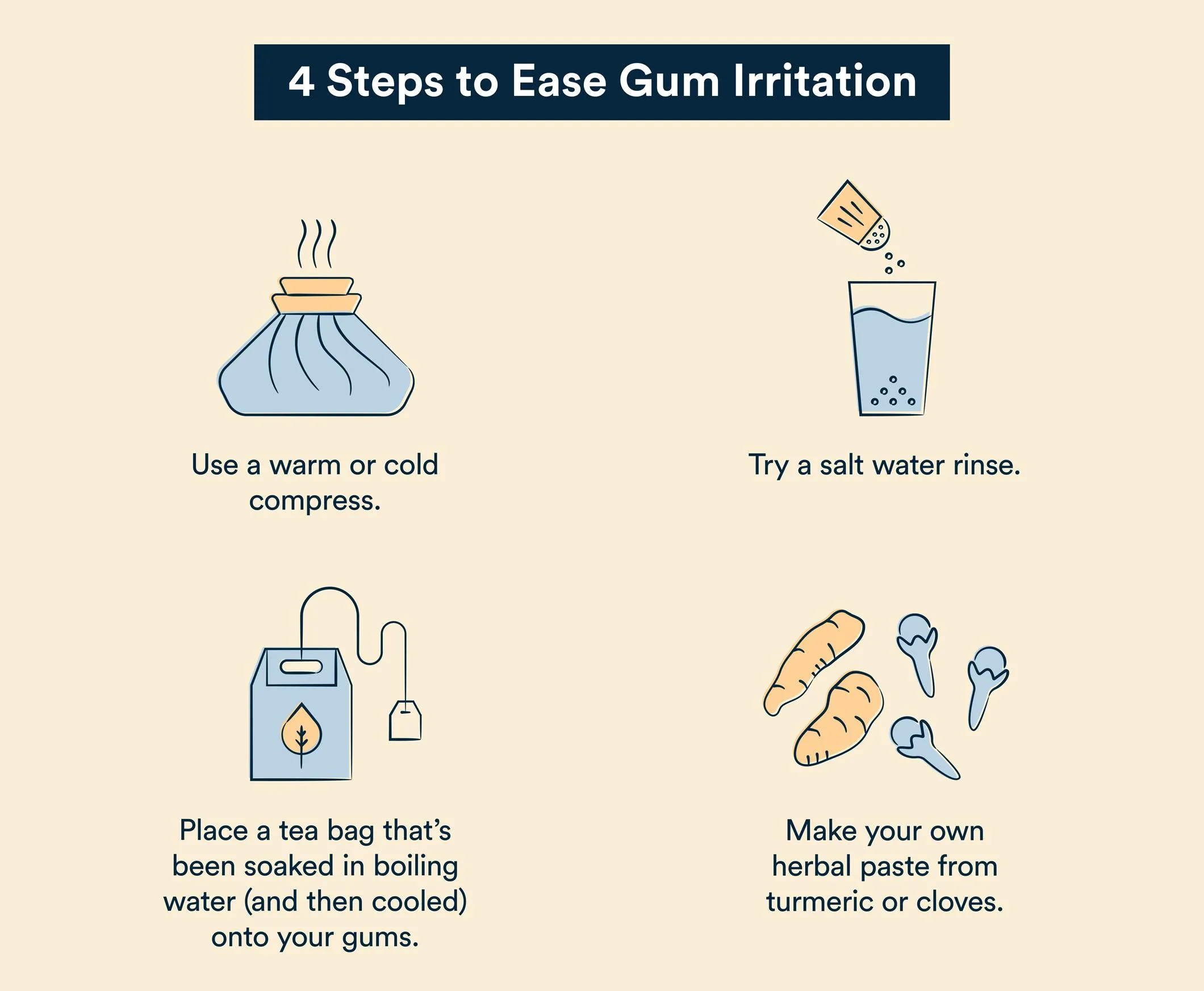Teeth whitening has become a popular cosmetic procedure, promising brighter smiles. However, it’s essential to be aware of the potential risks, including gum damage. This article explores the causes, types, and prevention of gum issues associated with teeth whitening, providing you with the knowledge to make informed decisions about your oral health.
What Causes Gum Damage from Teeth Whitening
Gum damage from teeth whitening primarily stems from the chemicals used in the whitening process. These chemicals, designed to penetrate the enamel and break down stains, can also irritate and damage the delicate gum tissues if not properly managed. Several factors contribute to this issue, including the concentration of the whitening agent, the duration of exposure, and individual sensitivity. Understanding these causes is crucial for mitigating potential harm and ensuring a safe teeth-whitening experience. Improper application, ill-fitting trays, or products that come into contact with gums for extended periods increase the risk of adverse reactions. The goal is to achieve a brighter smile without compromising the health of your gums.
The Chemistry of Whitening Agents
The active ingredient in most teeth-whitening products is a peroxide-based compound, either hydrogen peroxide or carbamide peroxide. These compounds work by releasing oxygen molecules that break down the stain-causing molecules within the tooth’s enamel. However, these same chemicals can cause irritation and damage to the soft tissues of the mouth. The mechanism of action involves the oxidation of the enamel. These agents also have the potential to cause damage to gingival tissues. Therefore, understanding the science behind these agents is key to using these products effectively and safely. The higher the concentration of the peroxide, the more effective it can be in whitening teeth, but also, the higher the risk of side effects like gum damage.
Hydrogen Peroxide & Carbamide Peroxide
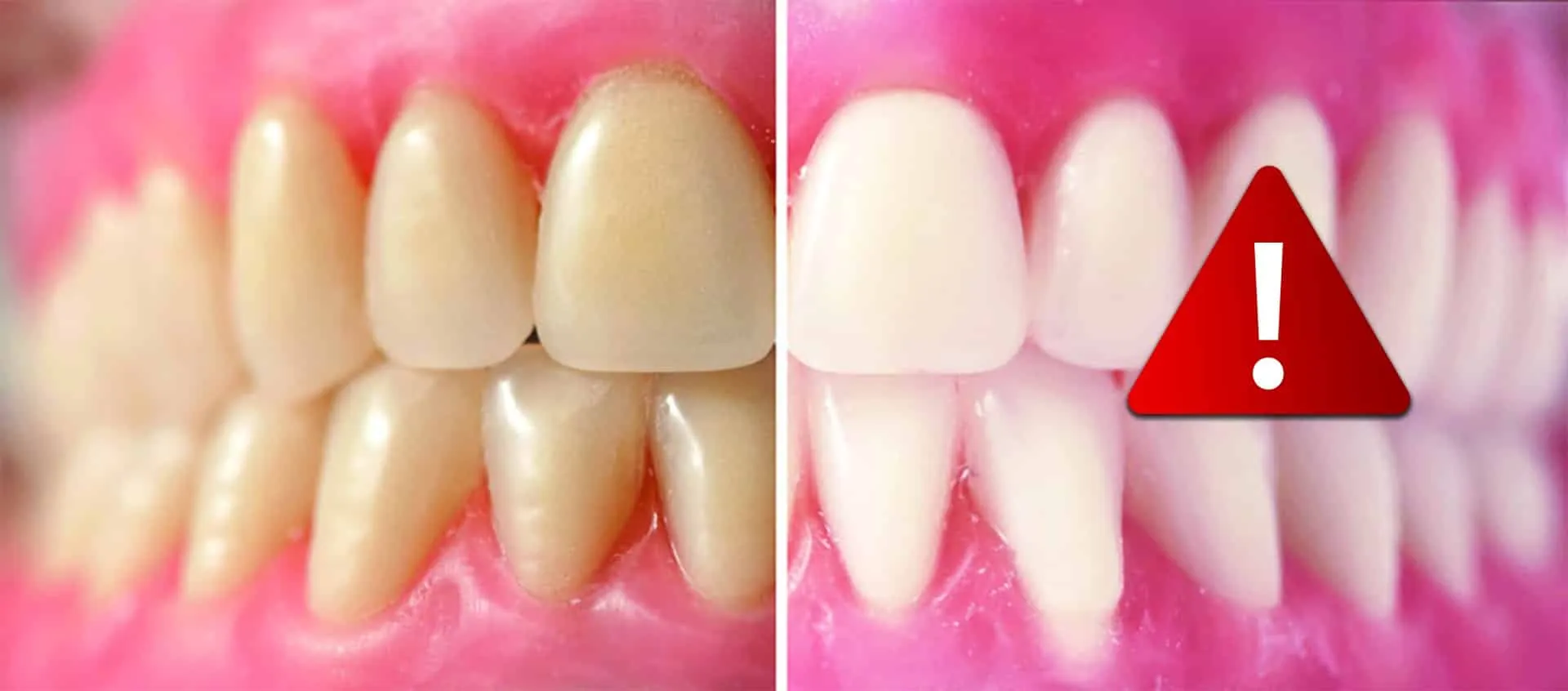
Hydrogen peroxide is the stronger of the two, and it is often used in higher concentrations in in-office treatments, resulting in quicker results. Carbamide peroxide, on the other hand, breaks down into hydrogen peroxide, and it’s commonly found in at-home whitening kits. Because it releases hydrogen peroxide more slowly, it is generally considered less harsh. The concentration levels of both of these chemicals play a major role in the potential for gum irritation. The higher the concentration of the active ingredient, the more likely you are to experience gum sensitivity or even chemical burns. When choosing a teeth-whitening product, it is important to consider these differences and weigh the pros and cons of each option in order to protect your gum health.
Concentration Levels & Risks
The concentration of the whitening agent is a major factor that determines the risk of gum damage. In-office treatments often use high concentrations of hydrogen peroxide (up to 40%), which can lead to significant sensitivity and burns if the gums aren’t adequately protected. At-home kits typically contain lower concentrations (3-20%) of carbamide peroxide, reducing the risk but not eliminating it. Even with lower concentrations, improper use or prolonged exposure can still cause irritation, redness, and even blistering of the gums. Always follow the manufacturer’s instructions and consult with a dental professional to determine the most appropriate concentration for your needs and oral health condition.
Different Whitening Methods & Gum Damage
Different teeth whitening methods carry varying levels of risk when it comes to gum damage. Each method has its unique set of pros and cons. The method you choose can significantly affect the likelihood of experiencing gum sensitivity, irritation, or more severe reactions. From professional treatments to at-home kits and whitening toothpaste, it’s important to be well-informed about the potential side effects and the best ways to minimize them. Consulting with a dental professional will help ensure you choose the most suitable and safest whitening option for your particular oral health needs and avoid unnecessary risks.
In-Office Teeth Whitening & Gum Issues
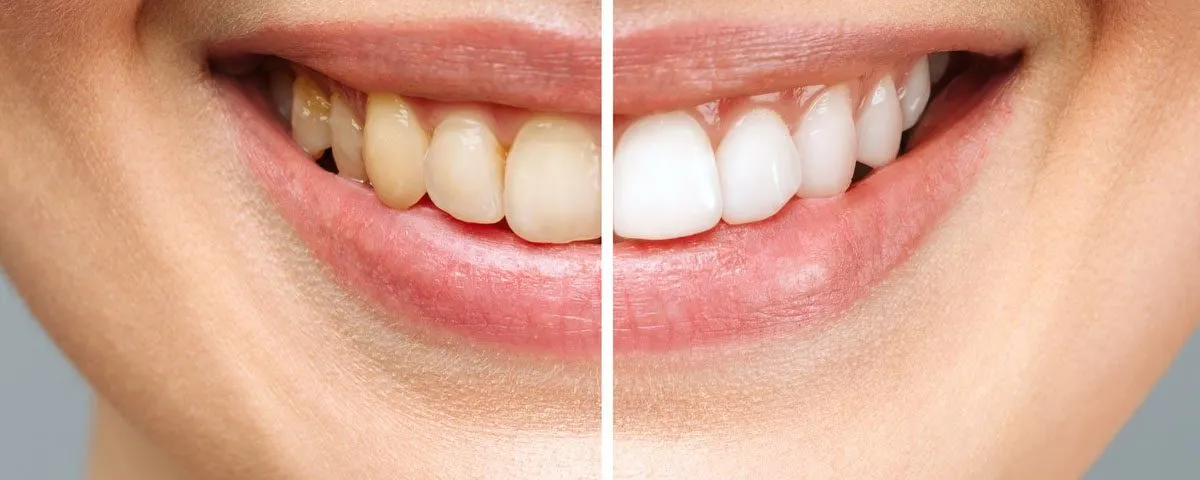
In-office teeth whitening is typically performed by a dental professional using higher concentrations of bleaching agents. While offering faster and more dramatic results, this method carries a higher risk of gum damage due to the potency of the chemicals used. The dentist applies a protective barrier to the gums before applying the whitening agent to minimize the risk, but some irritation is still possible. Sensitivity during and after the procedure is common. The risk of gum damage is particularly high if the protective measures are not properly applied or if the patient has pre-existing gum issues. Following post-treatment care instructions is also critical to mitigate any discomfort and encourage healing.
At-Home Whitening Kits & Gum Sensitivity
At-home whitening kits often involve custom-fitted trays filled with a whitening gel or strips that adhere directly to the teeth. While these methods use lower concentrations of the whitening agent, the risk of gum damage is still present, especially if the trays don’t fit properly or if the gel comes into contact with the gums. Overuse or exceeding the recommended treatment time can also increase the likelihood of irritation and sensitivity. Read the instructions carefully, and be sure that the trays fit your teeth snugly. If any discomfort occurs, stop the treatment and consult your dentist. Taking these precautions can help you to get a whiter smile while minimizing the chance of gum-related issues.
Whitening Toothpaste and Gum Problems
Whitening toothpaste typically contains mild abrasives or low concentrations of whitening agents designed to remove surface stains. The risk of gum damage from these toothpastes is generally lower than that of professional treatments or at-home kits. However, overuse of abrasive toothpastes can lead to gum recession and sensitivity over time. Some whitening toothpastes also contain ingredients that can irritate the gums, especially if used aggressively or by individuals with sensitive gums. Selecting a toothpaste with a low abrasivity rating and using it gently can help minimize the risk of gum problems. If you experience any irritation or sensitivity, it’s important to consult your dentist for guidance on appropriate oral hygiene practices.
Top 5 Facts on Gum Damage from Teeth Whitening
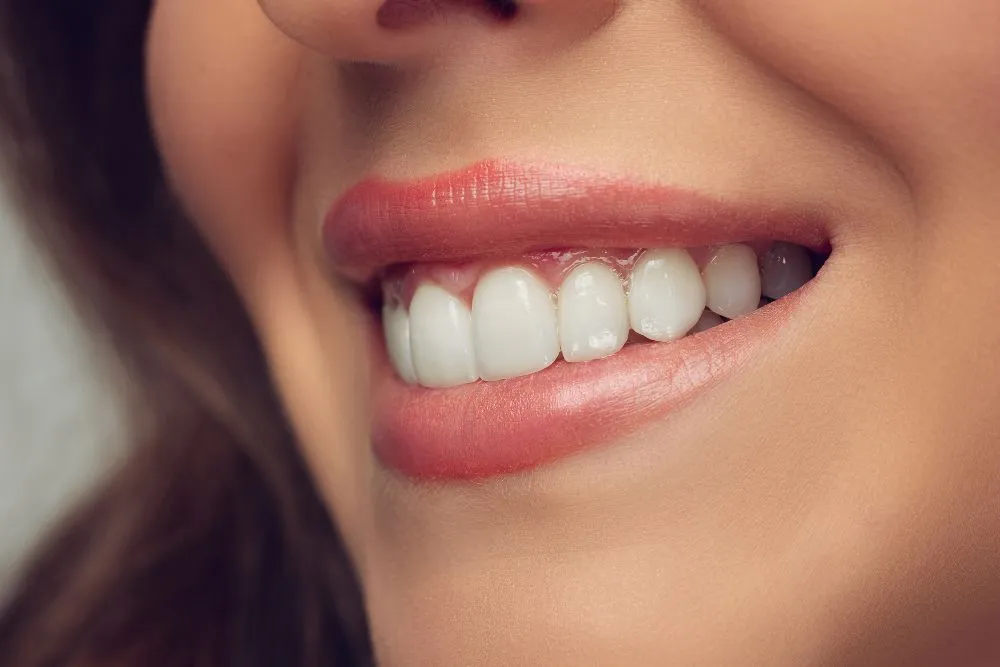
Here are the top 5 facts everyone should know regarding teeth whitening and gum damage to ensure their safety and long-term oral health. These facts are essential for those who are contemplating a teeth-whitening procedure or who have already undergone it. By being aware of these key pieces of information, you can be proactive about protecting your gums and enjoying a beautiful, healthy smile.
Fact 1 Sensitivity and Irritation
Sensitivity and irritation are the most common side effects of teeth whitening. This can manifest as a burning or tingling sensation in the gums, which may persist for a few days after the treatment. These symptoms are usually temporary and can be managed with desensitizing toothpaste or other over-the-counter remedies. However, it is essential to monitor your gums and consult a dentist if the irritation is severe or persistent. Understanding and addressing any gum irritation promptly can prevent more serious problems.
Fact 2 Chemical Burns
Chemical burns are a more serious consequence of teeth whitening, typically resulting from direct contact of the whitening agent with the gums. The severity of a chemical burn can range from mild redness and swelling to blistering and ulceration. This is particularly true of in-office whitening, where higher concentrations of peroxide are used. If you experience a chemical burn, see your dentist immediately. Chemical burns need to be treated promptly to promote healing and prevent secondary infections. Always ensure proper protection of the gums during the whitening procedure.
Fact 3 Gum Recession Risk
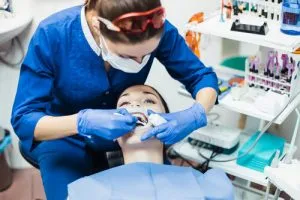
Over time, the repeated use of abrasive whitening products or incorrect brushing techniques can contribute to gum recession. Gum recession is the loss of gum tissue, exposing the roots of the teeth, which can lead to increased sensitivity and a greater risk of decay. It’s critical to use the proper techniques during your oral hygiene routine and to not use whitening products excessively. If you already have sensitive gums or a history of gum disease, you should exercise extra caution when using whitening products, and consult with your dentist regarding the best approach for you.
Fact 4 Ulcers and Sores
Ulcers and sores can develop on the gums and soft tissues of the mouth as a result of chemical burns or irritation from whitening products. These painful lesions can make it difficult to eat or speak comfortably. They can also increase the risk of infection if left untreated. The key is to avoid the use of products that irritate your gums. If ulcers or sores develop, seek professional dental care to prevent complications. Your dentist can provide guidance and treatment options to facilitate healing and alleviate discomfort.
Fact 5 Long-Term Damage
While not as common, in severe cases, repeated exposure to whitening agents can contribute to long-term damage to the gums, leading to chronic inflammation, and increased risk of gum disease. This can potentially affect the overall health of your mouth and have a negative impact on the appearance of your smile. Practicing caution and following all recommendations made by your dentist is important. Regular checkups, along with correct whitening methods, are essential to mitigate the potential for these adverse effects.
Preventing Gum Damage During Teeth Whitening

Fortunately, there are several steps you can take to prevent gum damage during teeth whitening, regardless of the method you choose. From careful selection of products to diligent adherence to instructions, your proactive approach will play a vital role. Combining these preventative measures with regular dental checkups will greatly help you achieve a brighter smile. You can feel confident that your efforts will help to keep your teeth and gums healthy.
Choosing the Right Whitening Method
When selecting a teeth whitening method, consider your oral health history and sensitivity levels. If you have sensitive gums, it is best to consult your dentist for their recommendation. They can provide you with guidance and help you choose an option that balances effectiveness with safety. Generally, at-home kits and whitening toothpaste have lower concentrations of active ingredients. If choosing an at-home kit, ensure that the trays fit correctly. Also, follow the directions precisely to avoid overexposure. Taking these precautions will enhance your experience and safeguard your gum health.
Protecting Your Gums During Treatment
Protecting your gums during treatment is paramount to prevent damage. If you opt for in-office whitening, your dentist will use a protective barrier, such as a rubber dam or a liquid dam, to shield your gums from the whitening agent. For at-home kits, ensure the whitening trays fit perfectly to minimize gel contact with your gums. Be diligent about following the recommended treatment times and avoiding over-whitening, which increases the risk of irritation. If you experience any discomfort, discontinue the treatment. Contact your dentist as needed and be sure to communicate any concerns or unusual symptoms to them.
Post-Whitening Care & Maintenance
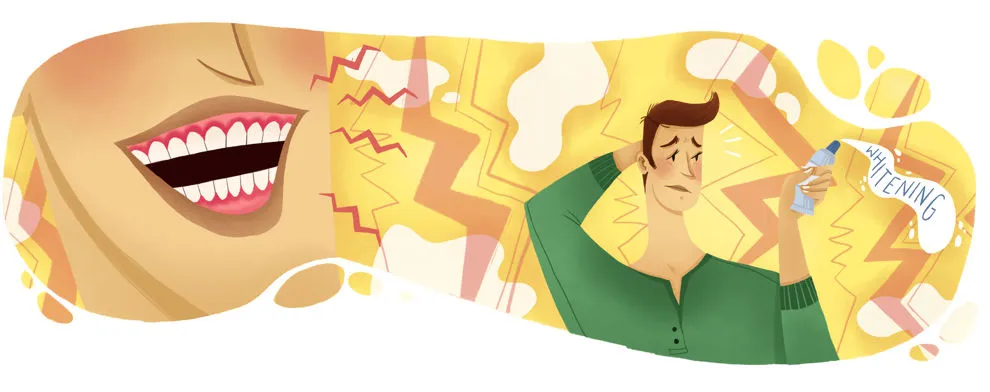
After your teeth whitening treatment, proper care is critical to soothe your gums and maintain your results. Avoid highly acidic or staining foods and drinks for at least 24 hours after the treatment. Using a desensitizing toothpaste, as recommended by your dentist, can help to alleviate any sensitivity. Continue with regular brushing and flossing. Maintain your regular dental checkups. These measures will help to preserve your new smile and promote overall oral health. By practicing the necessary post-whitening care procedures, you can enjoy the benefits of your teeth whitening without any unnecessary discomfort.
When to Seek Professional Help
Knowing when to seek professional help is an essential aspect of managing any potential gum damage from teeth whitening. If you experience severe pain, persistent irritation, blistering, or any other unusual symptoms, consult your dentist immediately. Ignoring these signs can lead to more serious issues, which can compromise your oral health. Regular checkups and communication with your dentist will ensure your dental health remains in top condition. They can assess the situation, provide appropriate treatment, and offer guidance to minimize future risks.
In conclusion, teeth whitening is a popular and effective cosmetic procedure, but it carries potential risks to gum health. By understanding the causes of gum damage, choosing the right whitening method, and following the proper preventive measures, you can minimize these risks and achieve a brighter, healthier smile. Always consult with your dentist to determine the most appropriate whitening option for your individual needs. By following these guidelines, you can confidently embark on your teeth-whitening journey, ensuring a beautiful smile without compromising your oral health. Prioritize your safety and consult your dentist before and during any teeth-whitening procedure.
